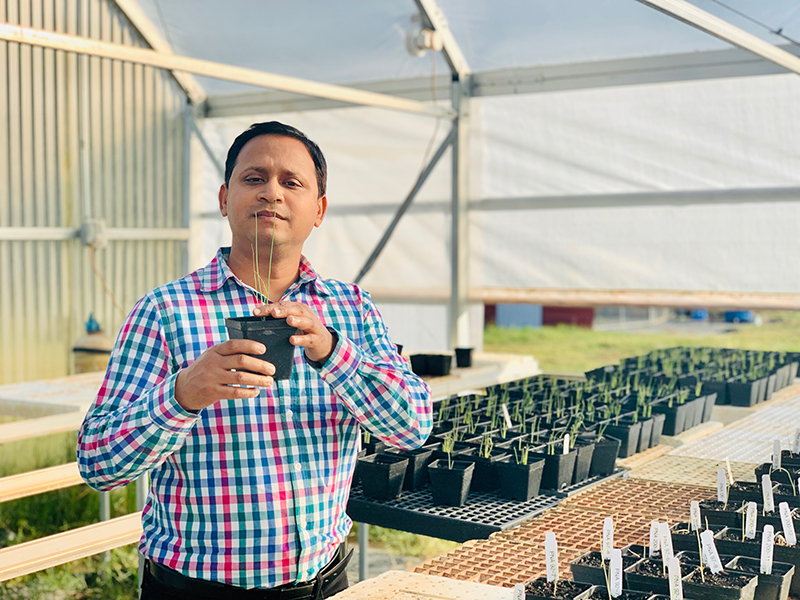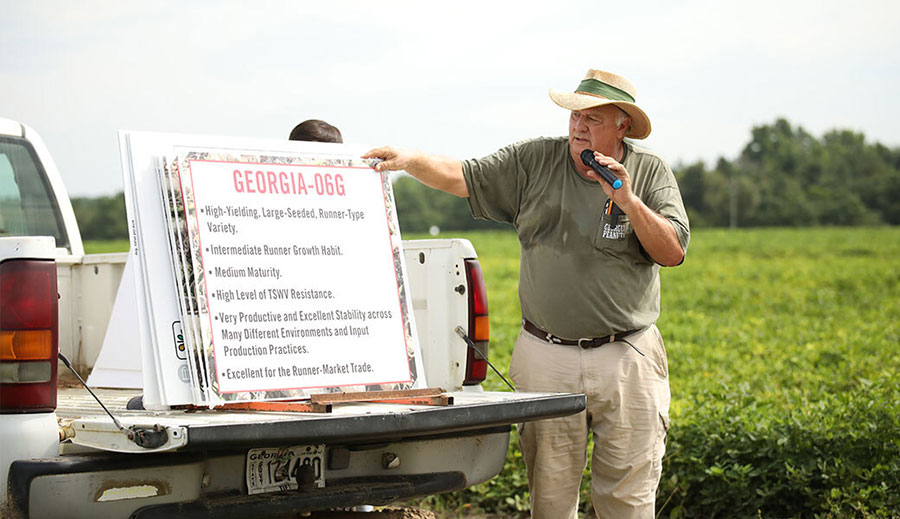If a disease outbreak in a field could be considered a crime scene, then the “CSI” lab for such viral suspects is on the University of Georgia campus in Tifton, Ga., where samples collected from the scene are sent and tested. The culprits are always identified.
“Every crop we put in fields is susceptible to many viruses in Georgia,” said Stephen Mullis, a research professional with the UGA College of Agricultural and Environmental Sciences, who oversees the viral lab. “And what we do here in the lab is determine what virus is present and at what levels.”
Georgia’s hot, humid environment is good for growing many crops, virtually year-round. Unfortunately, that same weather is perfect for plant diseases, too.
Over the past decade alone, viruses have cost farmers hundreds of millions of dollars in damage or in control measures. And no disease has caused more problems than the tomato spotted wilt virus, the disease that prompted the viral lab’s creation.
TSWV hit Georgia in the mid-1980s. By the ‘90s, it was at epidemic levels, particularly on peanut and tobacco plants, said Alex Csinos, a CAES plant pathologist.
“Necessity is the mother of invention,” Csinos said. “We had a serious outbreak of tomato spotted wilt virus in the early ‘90s. Since it was a new virus and no one else was doing any kind of work on that particular virus, we decided for us to save some of our crops from the destruction from this virus we needed to start our own laboratory on site to take care of the needs and requirements of the researchers that were studying the disease.”
The lab was established in Tifton, where samples could be efficiently handled in the heart of the state’s row-crop production area. Primary funding to get the lab started came from Phillip Morris International and the Georgia Tobacco Commission.
One sample is typically a leaf, stem or whole plant placed in a zip-close bag. Samples mostly come from research plots, where scientists conduct tests to learn more about viruses and discover ways farmers can treat or prevent them.
“On a normal day, we run a few hundred samples. And in any given year we run 60,000 to 70,000 samples through this lab,” Mullis said.
The lab mostly serves the state’s tobacco industry, which has declined in recent years due to many farmers getting out of the business after the government dropped its depression-era quota system. Farmers now contract their crops directly with tobacco companies, and profit margins are tight, said Fred Wetherington, a tobacco farmer in Lowndes County near the Florida line. Staying ahead of diseases is a major and costly problem.
“For us, the lab in Tifton has been crucial,” said Wetherington, the chairman of the Georgia Tobacco Commission. “If it wasn’t for research, we’d be in a lot worse shape. Whether it is new varieties, new herbicides or nematocides, the research dollars up in Tifton have gone a long way for us.”
For the first time in a long time, Georgia’s tobacco harvest, which recently finished, is good, Wetherington said. Weather was helpful and new research-based strategies to control TSWV seem to be working more widespread across the state.
“We’ve got the best tobacco crop we’ve had in 12 or 13 years,” he said.
When not handling tobacco, the lab gets samples of other crops like peanut and vegetables. Six years ago, the lab was on the forefront of the discovery of a mysterious virus threatening the state’s official vegetable: the Vidalia Onion. Iris yellow spot virus caused major concerns then, but its damage has been minimal since.

.jpg)
1.jpg)
.jpg)





